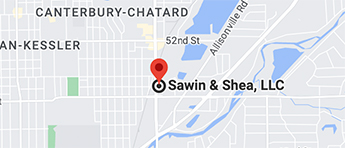Chapter 13 bankruptcy offers the option of lien stripping. Lien stripping can eliminate junior liens, such as second or third mortgages. If you’re filing or considering filing for Chapter 13, you need to be aware of the process and advantages of lien stripping. Chapter 13 lien stripping can be beneficial to your financial situation and may even help you save your home.
What is Lien Stripping?
Chapter 13 lien stripping eliminates junior liens when your property is worth less than the remaining balance of your primary loan. For example, if you owe $300,000 on your first mortgage and your home only has a market value of $250,000, you can strip a secondary mortgage.
When a court approves the stripping of a lien, after your discharge those lenders can no longer collect debts on that lien or threaten to foreclose on a home for missed payments. Under current bankruptcy law, this lien stripping is only available in Chapter 13 bankruptcy. It is not now available in Chapter 7 liquidation cases.
Why You Can Strip Liens with Chapter 13 Bankruptcy
When filing under Chapter 13, you can strip liens on real property considered “wholly unsecured.” So what makes a lien unsecured? It means that in the event of a sheriff’s sale, no money will be granted to the lender. If a house worth $150,000 is sold and the primary lender is owed $200,000, that means the secondary mortgage lender will not receive money for the loan. All of the money on the foreclosed-upon property went to the primary lender. If you have a second and third mortgage but you owe more money on your first mortgage than what your house is worth, you can get rid of your second and third mortgages.
What Happens to a Stripped Lien?
When you successfully strip a lien when filing for Chapter 13 bankruptcy, the lien undergoes the same treatment as other unsecured debts. Unsecured debts, such as debt accumulated from a credit card or medical bills, are discharged when you finish filing for Chapter 13. The lenders of unsecured debts may receive a small amount, or they may receive nothing. Once the lien is discharged, the lender has to remove it from your home, or in the case of a credit card, the lender has to wipe out the debt.
How Lien Stripping and Chapter 13 – Can Save Your Home?
Lien stripping when filing Chapter 13 bankruptcy reduces your overall debts, which may enable you to financially recover and pay off your primary mortgage. Fortunately, Indiana is a judicial foreclosure state. This means that even if a house is foreclosed upon, residents still own their property until the conclusion of a sheriff’s sale. When filing Chapter 13 bankruptcy, mortgage lenders have to comply with the established court-approved debtor’s repayment plan. If someone filing under Chapter 13 gets a repayment plan approved that involves monthly payments plus delinquency charges, they can potentially save their home from a sheriff’s sale.
Get Assistance with Chapter 13 and Lien Stripping with Sawin & Shea, LLC
If you’re an Indiana resident struggling with debt, consider seeking legal assistance. Sawin & Shea, LLC has experienced attorneys that can help you through the process of bankruptcy and lien stripping. Our compassionate attorneys have a great deal of experience in handling bankruptcy cases and will help take the next step in overcoming your debts. We even offer additional guidance after your bankruptcy case concludes.
Get a free consultation today by calling 317-759-1483, or you can click here and schedule a video consultation!



